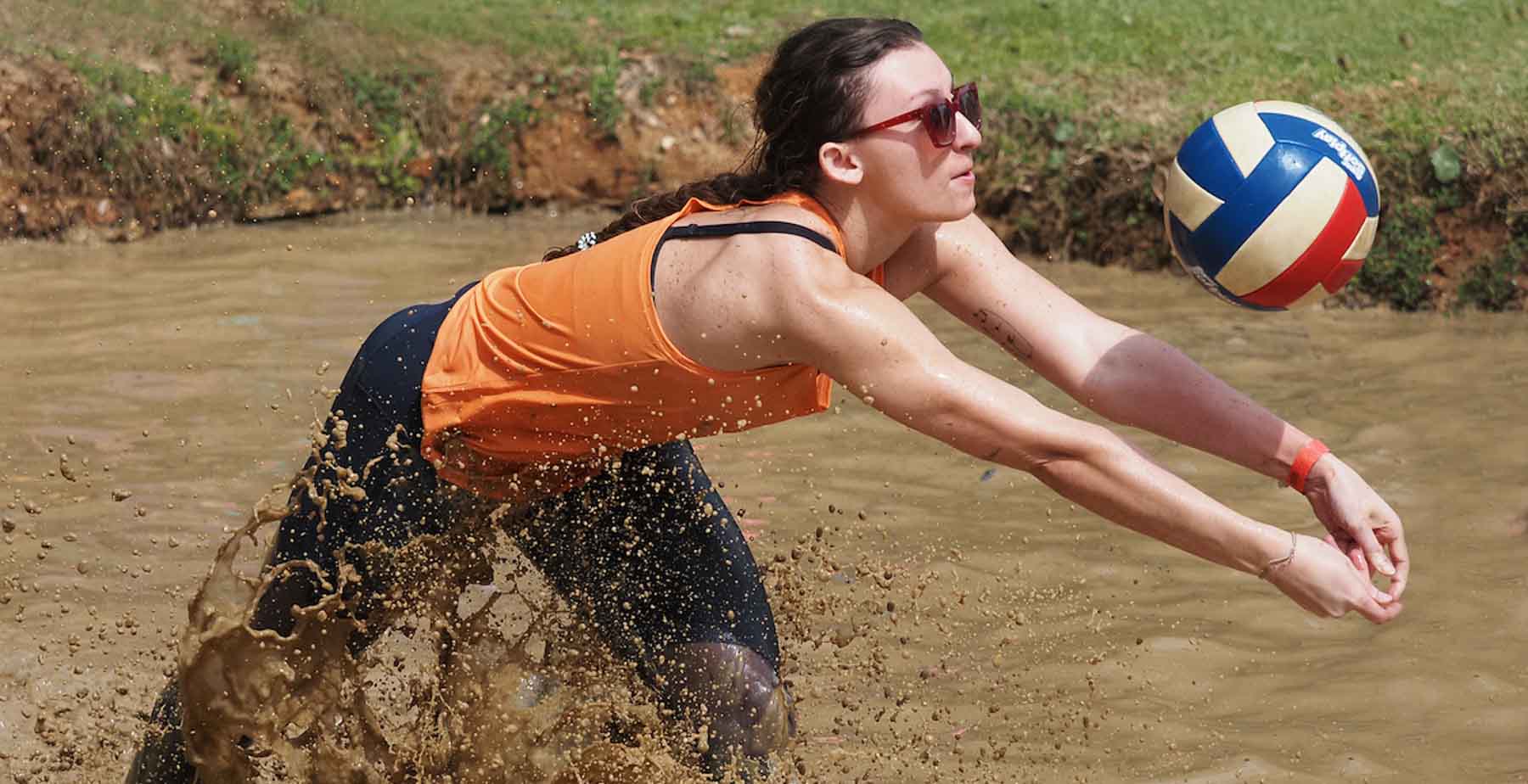Only Scratching the Surface
Posted on May 31, 2024

Cemeteries make the most peaceful neighbors. April Livingston’s backyard, on an oak-shaded corner directly across from historic Magnolia Cemetery near downtown Mobile, is no exception. The only sounds disturbing the quiet on a recent Tuesday morning were the chirps of birds and the scraping of a masonry trowel across concrete.
The trowel is one of the tools Livingston and nine other University of South Alabama students were using as they spent their second week of long days digging in the dirt to see what history they might uncover beneath the grass.
The students, all wearing long pants and sturdy boots, along with sunscreen and bug spray, were in Sean Coughlin’s class Anthropology 355: Field Work in Archaeology. It was one of 70 so-called Maymester courses at the University that ran for three weeks between the end of spring semester and the start of summer classes.
Livingston’s backyard was full of perfectly neat 1-meter-by-1-meter holes — for a total of 10 test units. More than halfway through the three-week course, they’d unearthed concrete slabs, bits of marble and pieces of slate as well as a few interesting finds, such as a toy airplane made of metal and a round emblem that reads “United States Coast Guard,” as well as a dirty strand of Mardi Gras beads.
Livingston, an artist and self-proclaimed “big history nerd” who has taught art at the University of South Alabama and other colleges, had been curious about her property since she and her husband bought their house in the Oakleigh Garden Historic District in 2018.
After playing with a metal detector and doing some of her own digging, “I wanted to get an archaeologist involved,” she said, so she contacted South’s Center for Archaeological Studies. When she learned that Coughlin, a historical archaeologist with the Center, had one spot left in his field school class, she considered it to be serendipitous and signed up — offering her backyard as a possible site for their dig.
At one point, there were three additional structures on what is now her property. “We knew this was the Magnolia Vault Company,” she said, pointing to various Sanborn maps from different eras. “It was a triple lot across the street from the Helsing Monument Company.”
That tracks with what the students had been finding. “Archaeology is a process,” said Coughlin. “This is important enough for the National Register of Historic Places.”
Any archaeological site that has research potential for shedding light on a theme from the past is eligible, he said. “The deposits we are finding can provide information and address research questions regarding the monument and vault industry in the mid-20th Century as well as information regarding small businesses during that same time period.”
As they excavate about 50 centimeters below the surface of the ground, the students are “trying to dig in the natural strata,” he said, “to ensure we’re not mixing artifacts from different time periods.” As they are revealed, any artifacts related to human activities are carefully placed in plastic bags.
After uncovering four concrete runners, Coughlin and the students started thinking the concrete was part of a U-shaped structure of buildings related to vault manufacturing. As another group of students dug nearby, they found two similar runners, measured the first ones and realized they’re related and were part of some sort of structure from the 1950s.
As she sifted the contents of a large plastic bucket through a waist-high screen, Brandy Chunn found pieces of glass and a few nails. “Sean always says it’s like putting together a puzzle without the picture on the box,” she said. “We’re trying to figure it out.”
Chunn earned an undergraduate degree in anthropology from South in 2022 and works as a tribal historic preservation specialist with the Poarch Band of Creek Indians. She enrolled in Coughlin's class to support her work with the Tribal Historic Preservation Office.
“We’re learning methodology,” Chunn said. “This is giving me an opportunity to be hands-on.”
All of the students seemed to enjoy the experience. As the breeze stirred the trees in Livingston’s mercifully shady backyard, Grace Barrentine, a senior, sat on a newly unearthed slab, filling a bucket with black dirt, one trowel-full at a time, before sifting it.
“I love archaeology,” she said. “I definitely want to do this every day. I’ll be sad when field school ends.” Originally a marine science major, she took an intro class that “changed my trajectory,” she said. She switched to archaeology, with a minor in biology, and plans to combine her two passions by becoming an underwater archaeologist.
Livingston, surveying the neatly dug square holes in her yard, said she thinks she might plant a tree in one of them. Eventually, she would like to build a sculpture studio beside her house. For now, the archaeological field work going on in her backyard has convinced her that she wants to keep digging on her own, just to satisfy her curiosity.
By 3:30 in the afternoon, the instructor and students, with dirt beneath their fingernails and streaked on their cheeks, called it a day. Barrentine noted that she has been so physically tired after digging every day that she sleeps really well at night. “It feels good to get dirty,” she said. “This is what humans need to do all day instead of sitting at a desk in front of a computer.”





